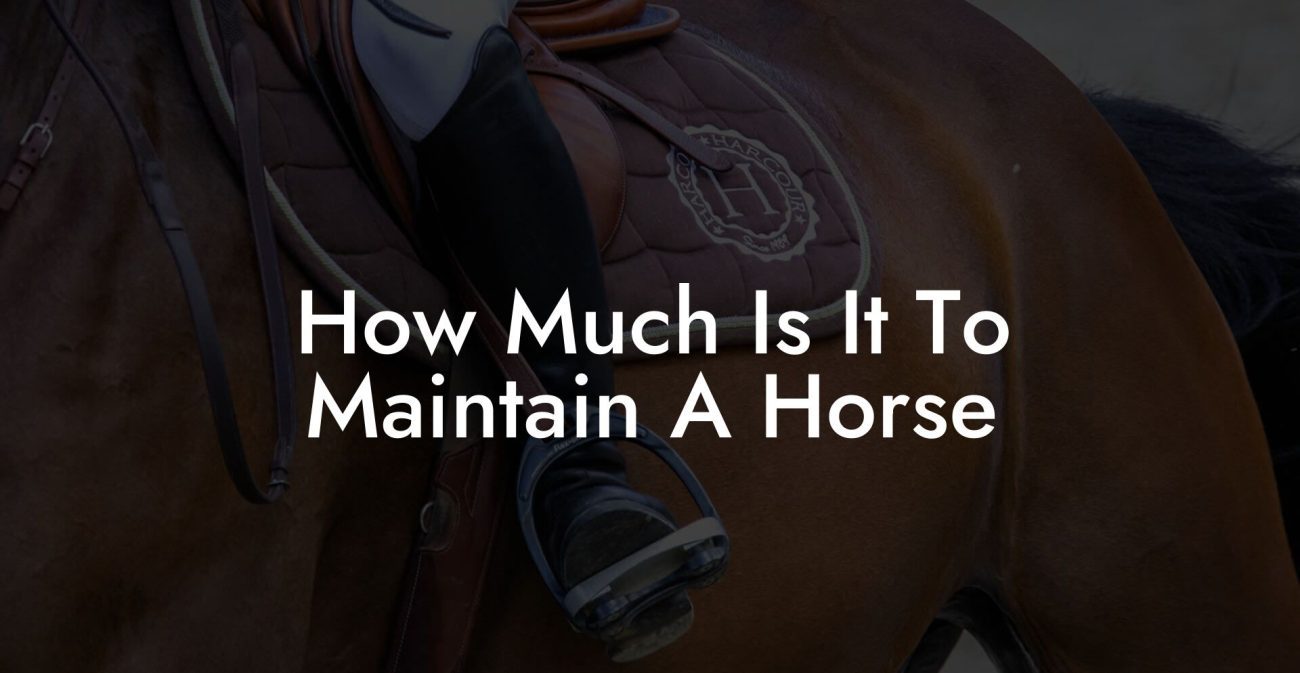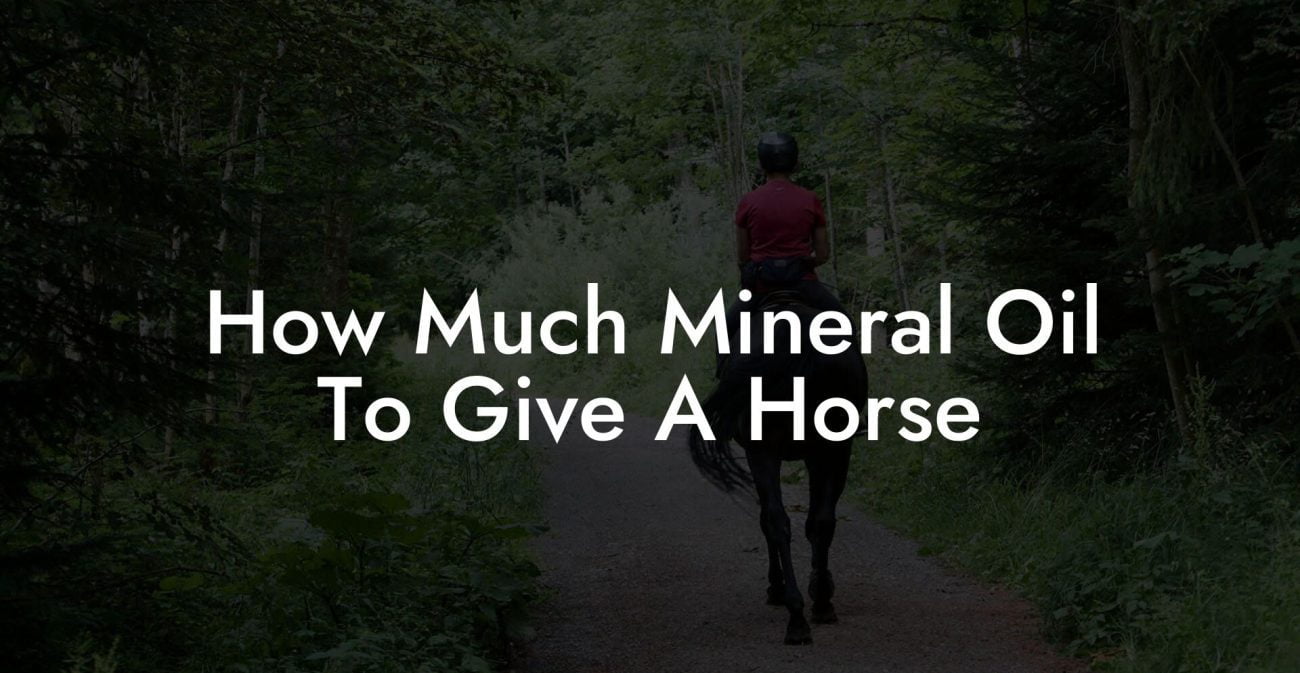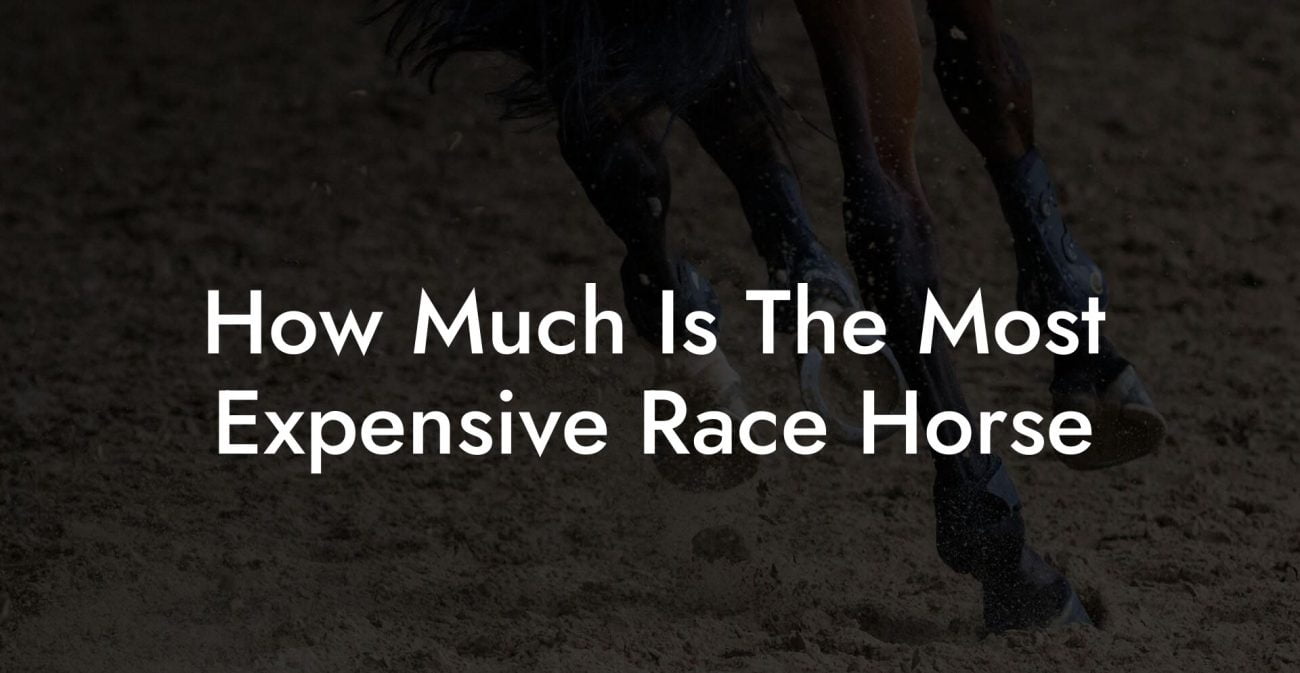Picture this: your majestic equine companion trotting into your life like a legendary meme, full of character, grace, and enough personality to power an entire TikTok series. Caring for a horse isn’t just about mucking out stalls and tossing a mediocre carrot their way, it’s an immersive, heart-and-soul adventure that combines old-school barn wisdom with a modern Gen-Z twist. Get ready to dive hooves first into the ultimate guide on how to look after a horse, where every aspect of equine care is covered with humor, honesty, and a dash of millennial flair.
Quick Links to Useful Sections
- Understanding Your Equine Companion: More Than Just a Pretty Mane
- Essential Horse Care Basics: Setting the Bar High (and the Stall Even Higher)
- Nutrition and Feeding: Keeping the Energy High and the Tail Wagging
- Stable Management and Pasture Care: Creating a Luxe Barn Life
- Exercise and Mental Stimulation: Galloping Beyond the Hamster Wheel of Life
- Grooming and Health Maintenance: From Manes to Hooves, Keep It All Sharp
- Equine Behavior and Communication: Reading Between the Mane Lines
- Preventative Healthcare & Routine Vet Visits: Keeping Your Pal in Peak Form
- Handling Emergencies and First-Aid: When the Unexpected Reins It In
- Integrating Modern Technology into Horse Care: Bridging Tradition with Innovation
- Resources and Community Support: Your Next Steps
- FAQs About Looking After a Horse
- Your Journey to a Thriving Equine Lifestyle
Understanding Your Equine Companion: More Than Just a Pretty Mane
Horses have trotted through history as symbols of freedom, raw power, and even as quirky sidekicks in epic sagas. Yet, beyond their glossy coats and impressive stature lies a creature with a unique personality and a set of needs all its own.
Whether you’re a first-time horse parent or a long-time equestrian enthusiast looking to brush up on essentials, understanding the fundamentals of equine behavior is the first step. Horses are herd animals with deep-rooted instincts, they crave companionship, clear communication, and consistency. They aren’t just four-legged Instagram stars; they’re sensitive souls who can sense your mood faster than you can say “neigh.”
The key to a thriving relationship with your horse is empathy. Get into the mindset of a horse detective: observe their body language, listen to their subtle signals, and always reward them with a friendly pat or a tasty treat. That understanding lays the groundwork for all aspects of horse care, ensuring that every interaction builds trust and respect.
Essential Horse Care Basics: Setting the Bar High (and the Stall Even Higher)
Let’s start with the foundation: everyday needs. Just like you wouldn’t survive on instant noodles and memes alone, a horse’s day-to-day life calls for a balanced blend of nutrition, exercise, rest, and affection.
Here’s a snapshot of the daily basics you should consider:
- Fresh Water: Horses can guzzle around 10-15 gallons of water daily. Make sure they have access to clean, fresh water at all times, you wouldn’t want your buddy dehydrated after a long Insta-scroll session.
- High-Quality Forage: Think of hay and pasture as their organic, farm-to-table meal plan. Their digestive system is optimized for fiber-rich foods, so quality hay is a must.
- Regular grooming: You’re not just keeping your horse Insta-ready; grooming helps control parasites, improves circulation, and reduces stress. Plus, it’s a great excuse to bond, think of it as a spa day for your four-legged friend!
- Routine Exercise: Whether it’s a morning trot, arena sessions, or simply stretching those legs out in the pasture, regular exercise is key to physical and mental well-being.
- Safe Shelter: A clean, well-ventilated stable or run-in shed protects against extreme weather, pests, and keeps your horse’s environment healthy.
Embracing these fundamentals is like establishing a solid Wi-Fi connection, you just need a steady and reliable setup before you shoot off all your more extravagant ideas.
Nutrition and Feeding: Keeping the Energy High and the Tail Wagging
Feeding a horse is an art form in and of itself. Forget the idea that a horse’s diet is as simple as “hay and oats”, it’s a nuanced balance that involves understanding seasonal changes, local forage quality, and the unique metabolic needs of your equine friend.
The Basics of Equine Diet:
- Forage: High-quality hay or pasture makes up the bulk of a horse’s diet. Fresh grass is ideal during your local growing season, and making sure the forage is uncontaminated is paramount.
- Concentrates: Depending on your horse’s workload, age, or health conditions, supplemental feeds like oats, barley, or specialized grain mixes can be a great source of energy. But remember, moderation is key!
- Supplements: Vitamins, minerals, and electrolytes can be crucial, especially for performance horses or those with specific health issues. For example, biotin and methionine might be recommended for a shiny coat and strong hooves.
Feeding Strategies that Work:
- Multiple Small Meals: Horses are natural grazers. Instead of loading up one huge meal, present several small feedings throughout the day to mimic nature’s rhythm. This approach helps maintain digestive health and prevents colic.
- Regular Feed Analysis: Consider testing your hay and feed for nutritional content. This can help ensure that your horse is getting the right balance of nutrients, vitamins, and minerals.
- Hydration is Key: Always pair feeding with plenty of fresh water. Equine digestion relies on proper hydration, so never underestimate its importance.
Infusing humor into your equine meal plan might sound quirky, but think of it this way: if you wouldn’t skimp on your trending lattes, why skimp on your horse’s food? A well-fed horse is a happy horse, and a happy horse means a happy ride, whether that ride is through the countryside or across your Instagram feed.
Stable Management and Pasture Care: Creating a Luxe Barn Life
Gone are the days of grimy, forgotten stables. Today’s horse barns are akin to high-end boutique hotels, with all the amenities a horse could dream of. Creating a safe, comfortable, and enriching environment for your horse is a key part of responsible care.
Cleanliness and Safety:
- Regular Cleaning: Dirt, manure, and old bedding should be cleared out on a regular schedule. A clean stable reduces the risk of respiratory issues and infections, plus it keeps pests like flies at bay.
- Ventilation: Good airflow is essential. Consider installing windows, vents, or fans to keep the air fresh and reduce the buildup of ammonia from urine and manure.
- Bedding Choices: Choose bedding materials like straw or shavings, but always be prepared to replace them if they become overly damp or contaminated.
Pasture Perfection:
- Regular Mowing and Reseeding: A healthy pasture looks more than just Instagram-worthy, it’s essential for ensuring that your horse has access to quality forage. Regular maintenance helps prevent overgrazing and keeps weeds under control.
- Fencing: Ensure that your pasture is securely fenced. Modern fencing solutions like electric wires or sturdy wooden panels can provide both safety and visual appeal, making sure your horse isn’t unexpectedly auditioning for a wildlife documentary.
- Shade and Shelter: Even in sunny climates, horses need the occasional retreat from the sun. Strategically placed trees, run-in sheds, or canopies can make all the difference during those sweltering summer days.
In essence, managing your stable and pasture with the same attention to detail that you’d put into curating your social media aesthetic can transform your barn into a sanctuary, a truly modern equine paradise where comfort meets safety.
Exercise and Mental Stimulation: Galloping Beyond the Hamster Wheel of Life
Horses are built for movement. They’re not lounging around like your favorite house cat, they’re eager to gallop, canter, and occasionally sashay across the field with the grace of a supermodel on a runway. Ensuring they get the right amount of exercise isn’t just about physical fitness; it’s crucial for their mental health too.
Exercise Essentials:
- Daily Routines: Whether it’s a brisk trot, a long canter, or even a leisurely walk, daily exercise keeps your horse’s body functioning at its best. For high-energy horses, consider mixing in periods of more vigorous activity to channel their inner rockstar.
- Structured training Sessions: Incorporate groundwork and riding sessions that are designed to build strength, balance, and coordination. Using games, obstacle courses, and varied routines can keep your horse’s mind as engaged as their body.
- Social Interaction: Horses are social beings. When possible, allow them to interact with other horses. Just like you enjoy the vibe of a good group chat or lively squad outings, horses benefit immensely from healthy social dynamics.
Mental Stimulation:
- Environmental Enrichment: Rotate toys, change up the grazing areas, and introduce new objects to explore in the pasture. A few novelty items here and there can mimic the challenges of the wild and keep boredom at bay.
- Interactive Training: Use positive reinforcement training methods to teach simple tricks or commands. This not only strengthens the bond between you and your horse, but it also stimulates their mind, reducing unwanted behavior born out of boredom.
- Variety is Key: Change routines periodically. Much like binge-watching a new series on Netflix, your horse will appreciate a refreshing twist in their daily routine.
Integrating exercise with mental stimulation ensures that your horse is not just physically fit, but also engaged and content. After all, no one wants to be the equivalent of a bored, scrolling-zombie, whether you’re human or horse.
Grooming and Health Maintenance: From Manes to Hooves, Keep It All Sharp
Grooming isn’t merely a superficial affair, it's a critical aspect of your horse’s overall well-being. Beyond the aesthetic benefits of a shiny coat and a luxuriously flowing mane, regular grooming plays a significant role in monitoring your horse’s health.
Grooming Routine Must-Haves:
- Brushing: Use a variety of brushes to deal with different coat textures. A stiff curry comb can help remove dirt and loose hair, stimulating circulation in the process. Follow up with a soft brush to smooth out the coat for that picture-perfect finish.
- Hoof Care: Horses’ hooves need regular cleaning and inspection. Use a hoof pick to remove debris and check for any cracks or abnormalities. Establish a schedule for trimming, and if needed, consult your farrier for professional care. Healthy hooves are paramount to preventing lameness and discomfort.
- Bathing and Mane Care: Depending on your climate and your horse’s activity level, occasional baths and mane treatments are essential. Use gentle, horse-specific shampoos and conditioners to avoid stripping away natural oils.
Health Checks and Preventative Measures:
- Regular Vet Visits: Even if your horse seems in tip-top shape, routine check-ups are crucial. A trusted veterinarian can help catch any potential issues before they develop into major problems.
- Vaccinations and Deworming: Stick to a vaccination schedule recommended by your vet, and ensure regular deworming protocols to keep internal parasites at bay.
- Dental Care: Believe it or not, horse dentistry is a thing! Regular dental checkups help prevent issues with chewing and digestion, keeping your horse comfortable and healthy.
When you treat grooming and health maintenance like a weekly self-care ritual, almost like spending an hour perfecting your latest TikTok look, you reinforce the bond between you and your horse while proactively preventing potential health issues.
Equine Behavior and Communication: Reading Between the Mane Lines
Ever wish you could decode what your horse is thinking? While they can’t text you a meme, horses have a remarkably intricate way of expressing themselves through body language, vocalizations, and subtle behavioral cues. Learning to read these signals is essential for avoiding misunderstandings and developing a mutually rewarding relationship.
Key Aspects of Equine Communication:
- Body Language: Ears pricked, tail swishing, or a shift in posture are all indicators of a horse’s mood. For example, flattened ears might signal agitation, while a relaxed posture usually means they’re comfortable and at ease.
- Vocalizations: Horses use a variety of sounds, from whickers to snorts, to communicate. Understanding these nuances can help you gauge if your horse is excited, anxious, or simply saying “hey, I need a treat!”
- Proxemics: Just like humans, horses have personal space. Respecting their boundaries builds trust, while intruding too close too quickly might lead to defensive behavior.
Integrate humor and empathy when interacting with your horse. Think of it as learning how to properly “like” and “share” their feelings in real life. Whether they’re nudging you for attention or giving you a gentle reminder of their needs, every gesture is a piece of a fascinating communication puzzle.
Preventative Healthcare & Routine Vet Visits: Keeping Your Pal in Peak Form
Preventative care is one of the most crucial aspects of keeping a horse happy and healthy. On-demand fixes are cool and all, but a proactive approach to veterinary care, paired with a bit of smart planning, can save you from more serious issues down the road.
Key Preventative Measures:
- Regular Vaccinations: Work with your equine veterinarian to create a vaccination schedule that fits the local disease risk factors and the specific needs of your horse.
- Deworming: A routine deworming schedule based on fecal egg counts ensures your horse’s digestive tract stays healthy and free from pesky parasites.
- Dental Exams: Annual dental check-ups help in maintaining proper chewing and digestion. This is as essential to your horse as having a regular dental cleaning is for you.
- Parasite Control: From biting flies to ticks and mites, applying insect repellents and maintaining a clean environment is crucial for keeping skin infections and discomfort at bay.
Integrating regular health assessments and staying on top of preventative care can help you nip potential issues in the bud. Keep a health journal to track changes in behavior, appetite, or coat condition; this minor effort can lead to major benefits in your horse’s overall wellness.
Handling Emergencies and First-Aid: When the Unexpected Reins It In
Just like binge-watching a thriller series with unexpected plot twists, horses too can encounter emergencies. From accidental injuries during spirited runs to sudden weather-induced stress, being prepared with a solid first-aid plan is essential.
Core Elements of Equine First-Aid:
- Basic First-Aid Kit: Stock your kit with essentials like antiseptics, bandages, tweezers, and a pair of quality hoof picks. Throw in some equine-specific medication if recommended by your veterinarian.
- Wound Management: Learn how to properly clean and dress minor cuts and abrasions. A well-managed wound can often prevent infection and hasten recovery.
- Recognizing Signs of Pain: Understand the subtle hints that could indicate stress or discomfort. A sudden change in behavior, a reluctant gait, or unusual vocalizations might signal that something isn’t right.
- Emergency Contacts: Always have your vet’s contact information handy. In a crisis, swift action can make all the difference.
Just like you wouldn’t venture out without your phone and charger, don’t hesitate to prepare your horse’s emergency plan to handle unpredictable moments with confidence and calm.
Integrating Modern Technology into Horse Care: Bridging Tradition with Innovation
In today’s digital age, even the world of horsemanship isn’t left behind. From wearable devices that monitor your horse’s activity levels to apps that help manage feeding schedules and health records, technology has become an increasingly valuable partner in equine care.
Tech Tools that Can Transform Your Routine:
- Fitness Trackers: Devices designed for horses can track movement, heart rate, and overall activity. These insights help you optimize training sessions and detect early signs of fatigue or distress.
- Digital Record Keeping: Maintain a digital log of vaccinations, deworming schedules, and vet visits. Apps tailored for equine management streamline record keeping, making it easier to access important information on the go.
- Social Media and Community Platforms: Join equestrian forums, follow popular horse care accounts, and tap into a network of like-minded folks who are continually sharing tips, tricks, and hilarious horse memes.
- Online Tutorials and Webinars: With a wealth of online resources, you can always find expert guidance on everything from advanced training techniques to the latest in natural remedies for common equine ailments.
Embracing technology doesn’t detract from the timeless traditions of horse care, it enhances it, creating a bridge between time-honored wisdom and innovative, modern solutions that are as dynamic as you are.
Resources and Community Support: Your Next Steps
Even though the world of horse care can seem as vast as the open plains, you’re never alone on this journey. Numerous resources, communities, and support networks are ready to jump in and help you navigate every twist and turn in your equine adventure.
Where to Find Help:
- Equestrian Forums and Social Groups: Whether it’s Facebook groups, subreddit communities, or dedicated equine care forums, tapping into these networks can provide invaluable peer advice, hilarious anecdotes, and troubleshooting tips from experienced horse enthusiasts.
- Local Riding Clubs and Associations: These organizations offer not only riding lessons and structured training sessions but also social gatherings, workshops, and group rides that foster a sense of community and shared learning.
- Veterinary and Equine Health Websites: Trusted sites like the American Association of Equine Practitioners (AAEP) and other regional equine health bodies offer detailed guides, best practices, and the latest research on horse health.
- Workshops and Online Courses: From grooming techniques to advanced training methodologies, local events and online classes offer hands-on learning experiences designed to elevate your equine care game.
Taking Action: So, what’s next? Start by curating a list of your local equine resources and dedicating a few hours each week to learning something new. Whether it’s joining a webinar on natural hoof care, attending a community workshop, or simply connecting with fellow horse lovers online, every step you take cements your status as an informed, empowered horse caretaker.
Leverage technology to join digital communities, follow influential equestrians on social media, and subscribe to newsletters that keep you in the loop on emerging trends in horse care. Your dedication to learning and growing is your best asset on this journey, and before you know it, you'll be the go-to guru in your equestrian circle.
FAQs About Looking After a Horse
Here are some frequently asked questions that tackle common concerns and curiosities about horse care, blending practical advice with a hint of modern flair.
1. How often should I feed and water my horse?
Horses thrive with consistent feeding schedules. They generally need access to forage throughout the day, along with regular supplemental feeds if their energy demands require it. Clean, fresh water should be available at all times, think of it as infinite refills at your favorite coffee shop, but for hydration!
2. What are the most important vaccinations for a horse?
Essential vaccinations for horses typically target diseases such as tetanus, influenza, and West Nile virus. Your veterinarian will recommend a vaccination schedule based on your horse’s age, usage, and regional risks.
3. How do I know if my horse is getting enough exercise?
A healthy horse displays signs of vitality: a shiny coat, regular appetite, and a joyful, responsive demeanor. Monitoring their energy levels and behavior after exercise sessions will help you adjust their routine to find the perfect balance between work and play.
4. What should be included in a horse first-aid kit?
A comprehensive kit should contain antiseptics, bandages, hoof picks, tweezers, and equine-specific medications. Always keep contact information for your vet handy to address emergencies swiftly.
5. How do I manage grooming with a sensitive horse?
Patience and consistency are key. Slow movements, gentle strokes, and praising your horse throughout the grooming process can make it an enjoyable bonding experience rather than a stressful ordeal.
6. Can technology really make a difference in managing horse care?
Absolutely! With digital record-keeping, fitness trackers, and online communities, modern technology makes it easier than ever to monitor your horse’s health, schedule preventative care, and stay updated on the latest advancements in equine management.
Your Journey to a Thriving Equine Lifestyle
The road to exemplary horse care is paved with passion, commitment, and a pinch of humor. It’s about blending traditional barn practices with modern insights while keeping your horse’s unique personality at the center of every decision. Whether you’re meticulously scheduling grooming sessions, tracking your horse’s progress with high-tech gadgets, or just giving them a loving pat on the neck after a long day, remember that each moment counts.
Embrace the vibrant, ever-evolving world of equine care with the same energy you bring to your social feeds and weekend adventures. Every action, from choosing the best hay to scheduling that long overdue vet check, sends a message: you care, you’re informed, and you strive to give your horse the best life possible.
Keep exploring, keep learning, and, most importantly, keep enjoying the journey. Horses have an uncanny way of infusing our lives with joy, and every gallop, neigh, and playful nudge reinforces why this ancient partnership between human and horse continues to be the stuff of legends.
So here’s to you, the modern horse enthusiast, innovative, compassionate, and unapologetically dedicated to creating a life where both you and your equine friend thrive in harmony. The barn may be old-school, but the passion you bring is as fresh and dynamic as the latest viral trend. Saddle up, stay curious, and let your journey toward a thriving equine lifestyle be as endless as the open range.













